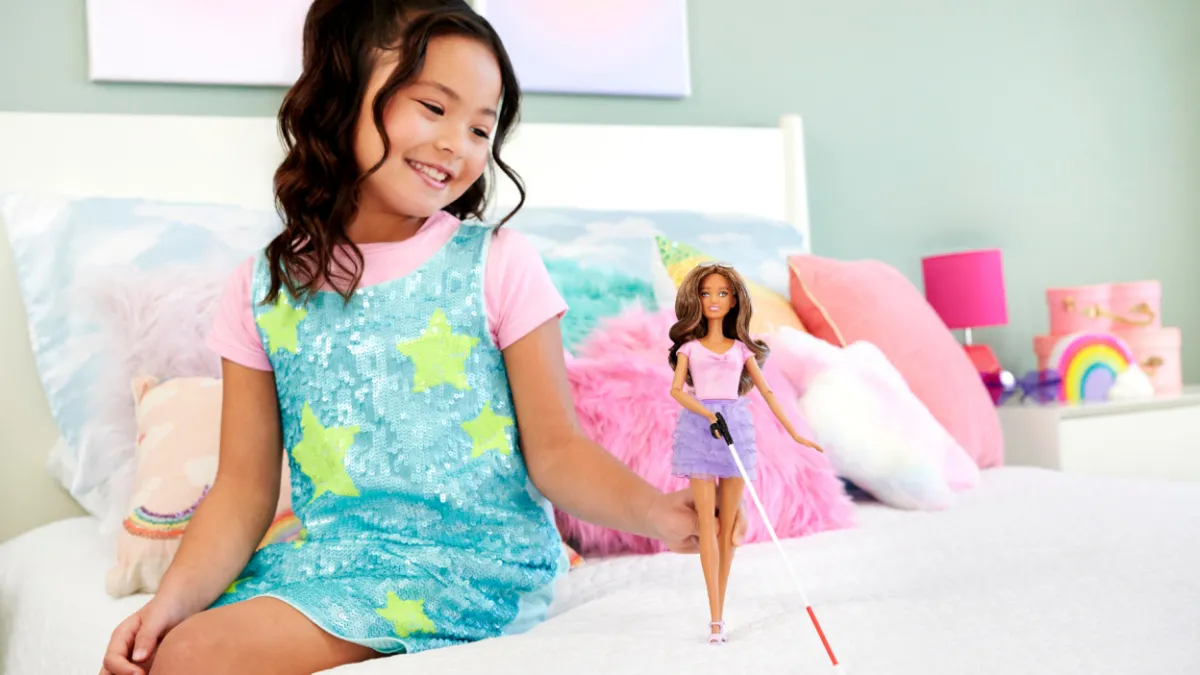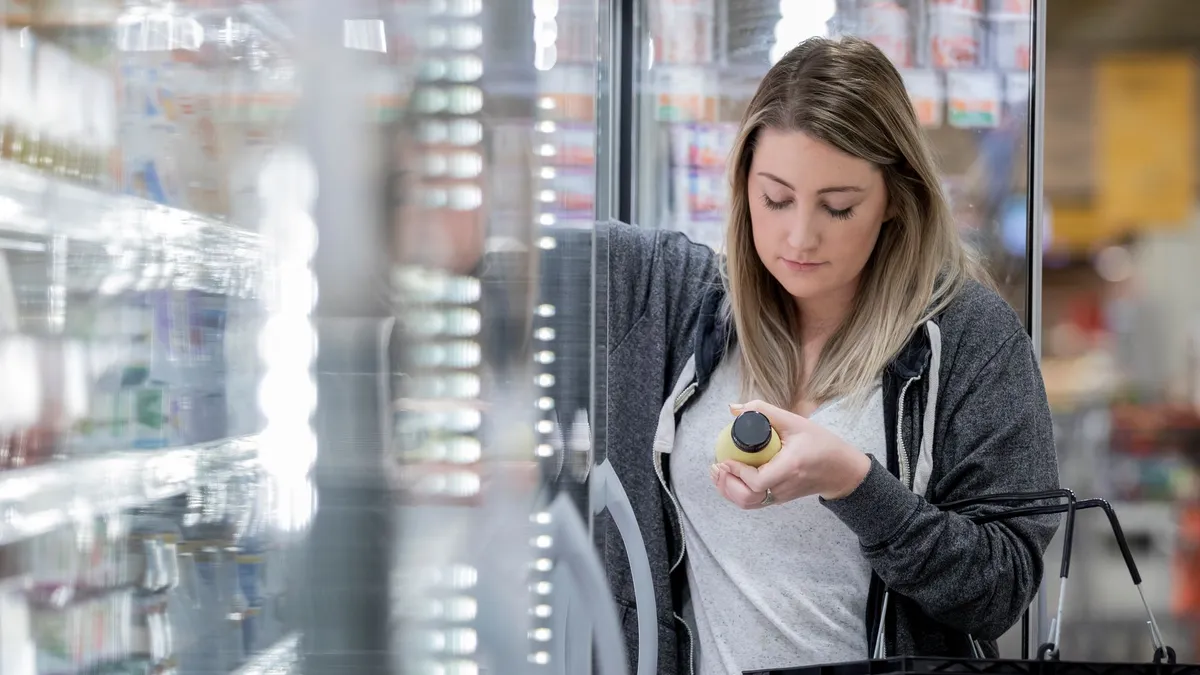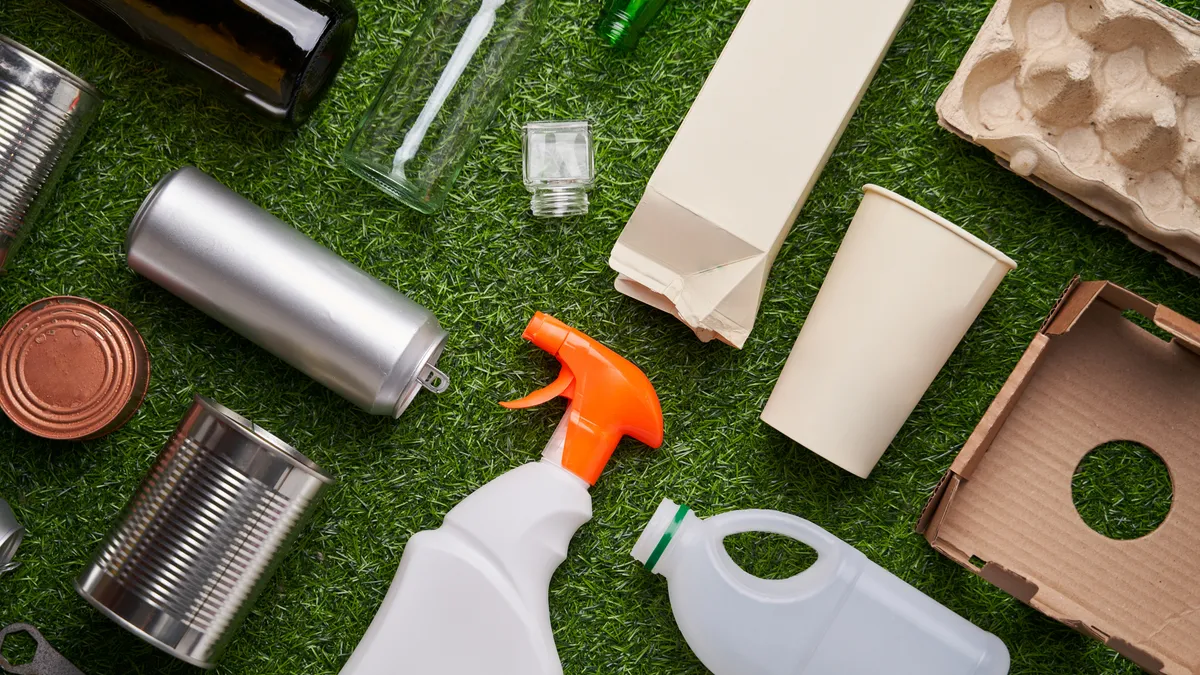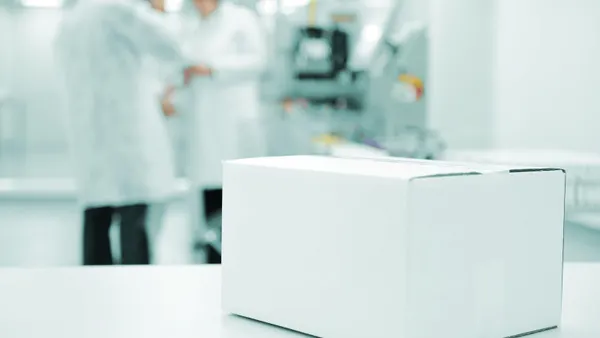Companies constantly innovate with technology and redesign their packaging to get better performance, improve marketability and enhance sustainability. Here’s a look at four new or redesigned packaging solutions on Packaging Dive’s radar.
Barbie embraces braille

Living in a Barbie world is now more accessible, thanks to the packaging on Mattel’s newest Barbie product. The doll depicts a person who is blind, and it’s the first Barbie to sport braille that spells out “Barbie” on the packaging.
Mattel worked with the American Foundation for the Blind on the packaging and other aspects of the new product “to represent individuals with blindness and low vision throughout all stages of the design process,” according to a company press release. AFB assisted with features of the accessible packaging including the braille addition and placement of the writing on the box.
Mattel launched the new doll and packaging this week.
Scooping the competition
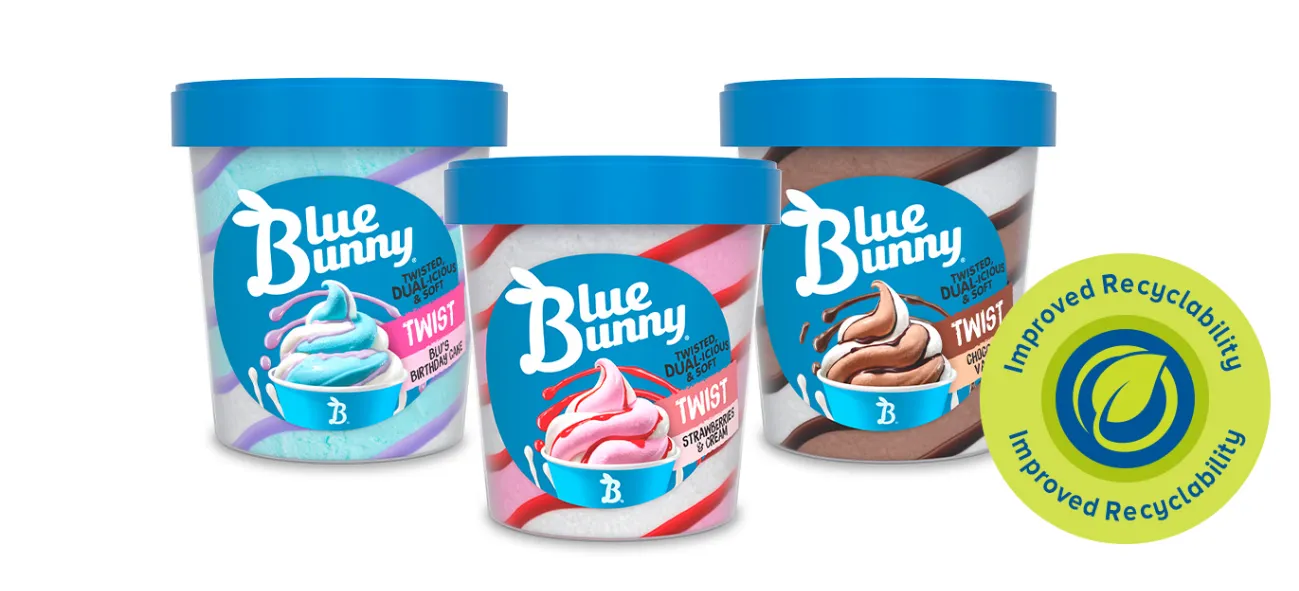
Berry Global assisted Wells Enterprises with creating a new pint-sized container for the Blue Bunny brand of Twist Cones frozen treats. The freezer-grade containers are made from polypropylene, and the lids are high-density polyethylene. PP is widely recyclable and improves “the recyclability of traditional ice-cream packaging, which is generally made of plastic-lined, paper board,” according to a company news release.
The translucent, single-serve containers are similar to Blue Bunny’s custom 48-ounce PP containers. They are designed to nest during transportation and storage. “This helps optimize supply chain efficiency and lessen the need for truckload shipments,” the news release states.
Everything’s coming up daisies
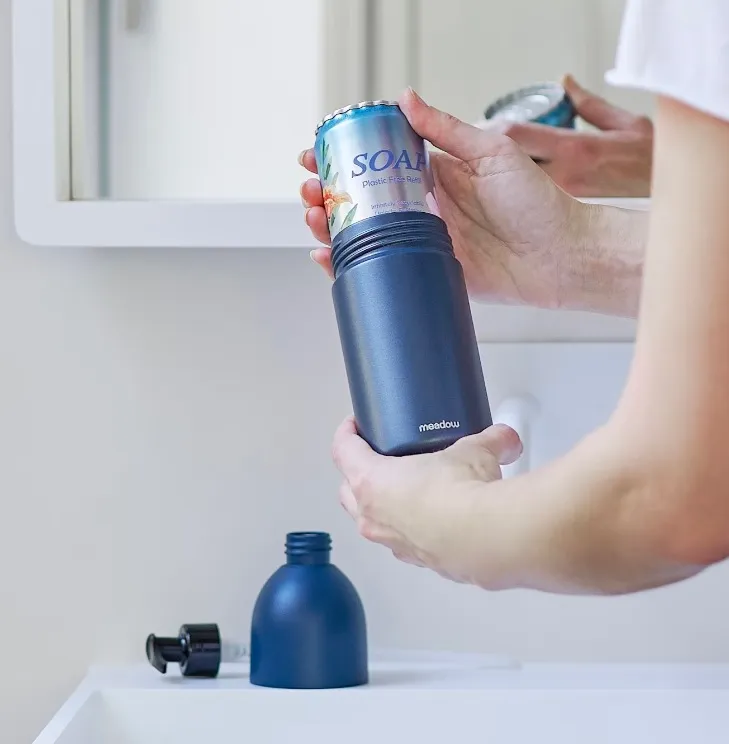
Sweden-based company Meadow developed a patented refillable metal packaging solution for cosmetics and personal care, called the Daisy Top, that it says is the “most premium, sustainable and convenient solution to remove single-use, linear packaging from consumer products.”
The aluminum dispenser accommodates standard-sized aluminum cans that do not have a pull tab or other opening mechanism. Instead, the consumer puts the refill cartridge into the dispenser and screws shut the system, which pierces the ridged-edge can top. This creates a cracking noise that serves as an audible cue that the product is properly installed and ready to dispense.
Meadow’s website says the refill cans are recyclable, and the system is safe in a non-food context.
In good taste
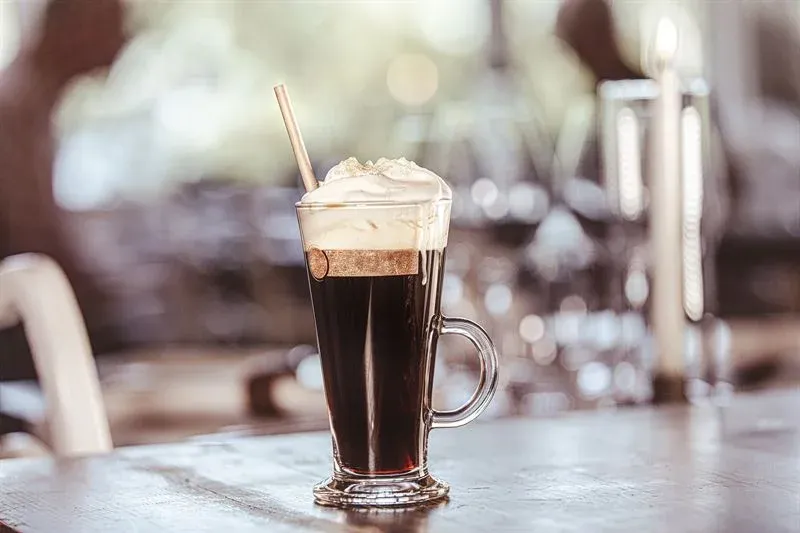
Another Swedish company, Gaia Biomaterials, developed a compostable material for use in straws. It’s derived from the company’s limestone-based Biodolomer material, which is certified compostable by BPA and does not result in microplastics during breakdown, according to a company news release.
The rigid, heat-resistant material can withstand temperatures up to 80 degrees Celsius, or 176 degrees Fahrenheit, without significantly losing rigidity or stability, the company said. Plus, a key marketing point is that the material does not interfere with taste like some competing materials, such as paper, the company says.
“According to many consumers, the degradable alternatives have simply not been good enough,” CEO Peter Stenström said in the release. “But soon you’ll be able to use straws again. With a clean conscience and without a distinct aftertaste of paper.”



